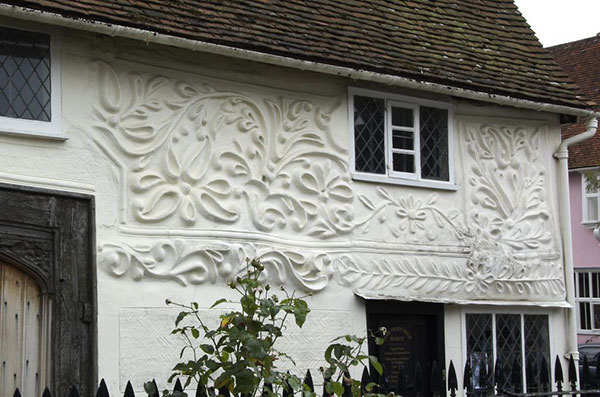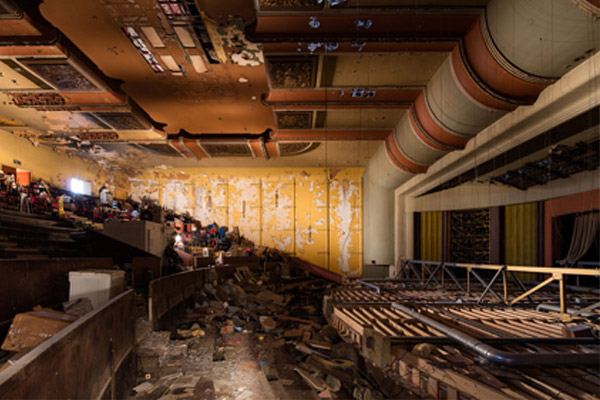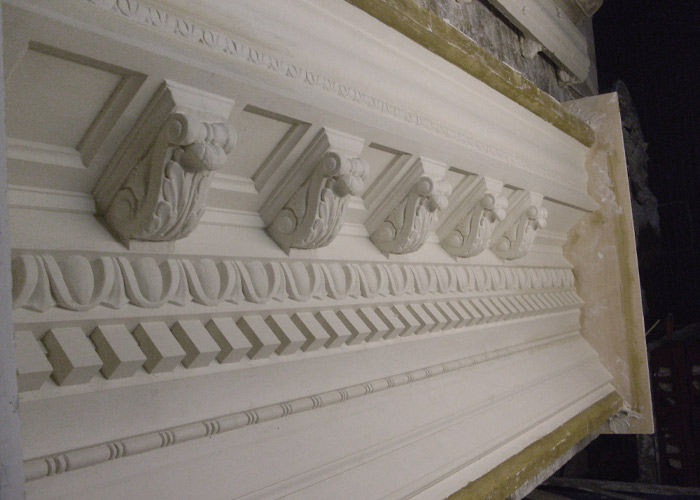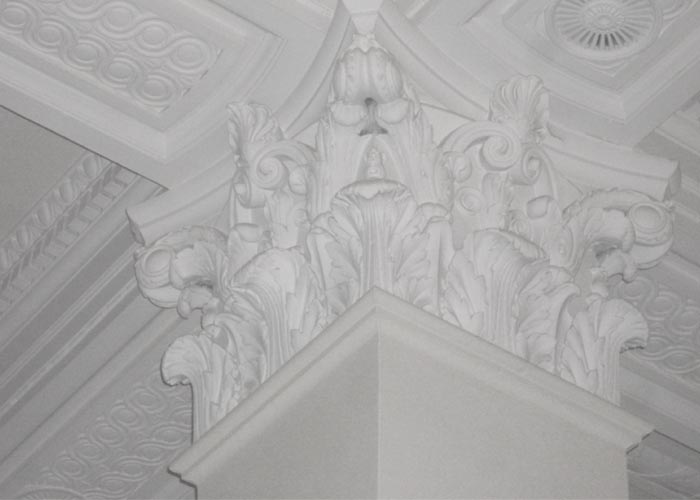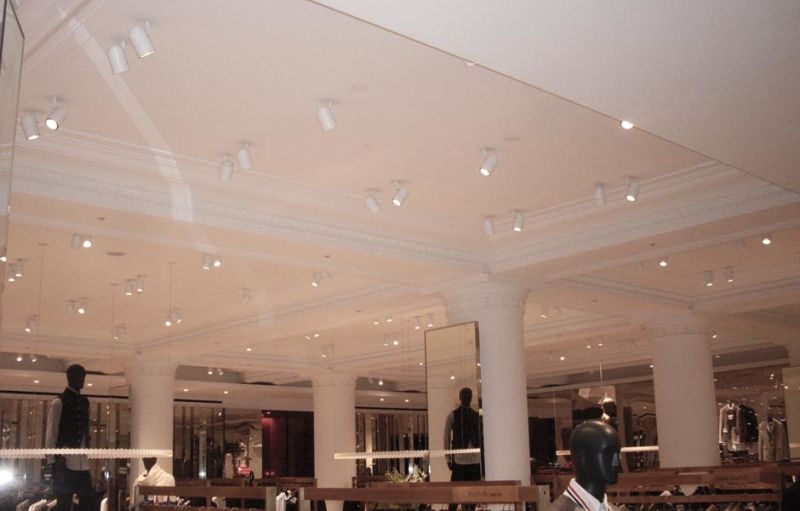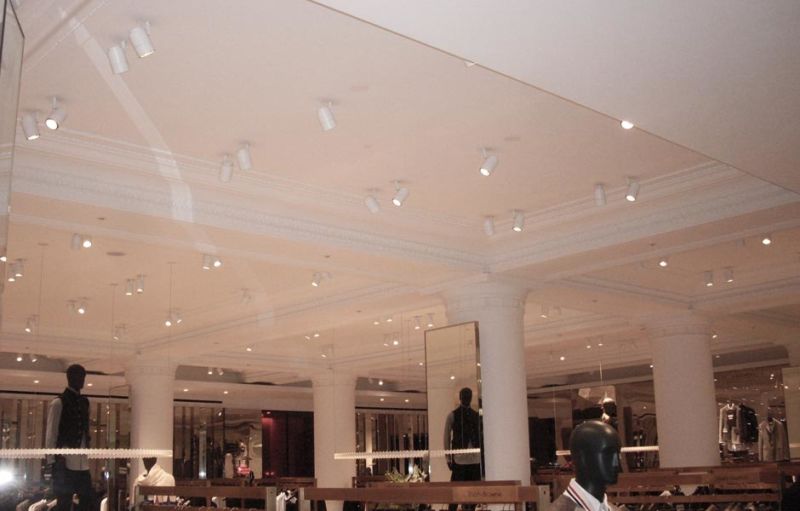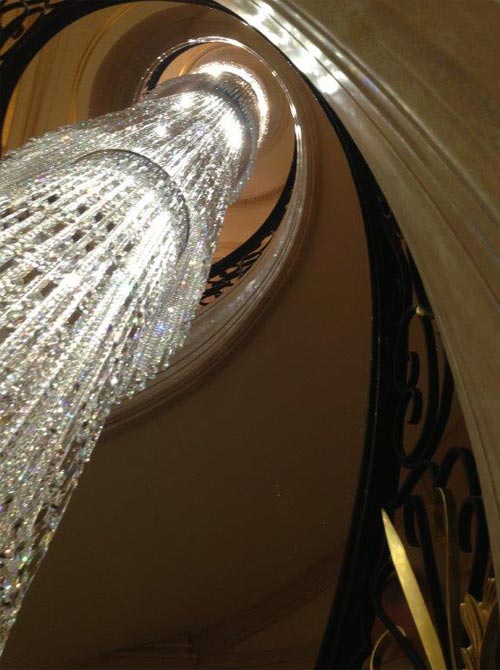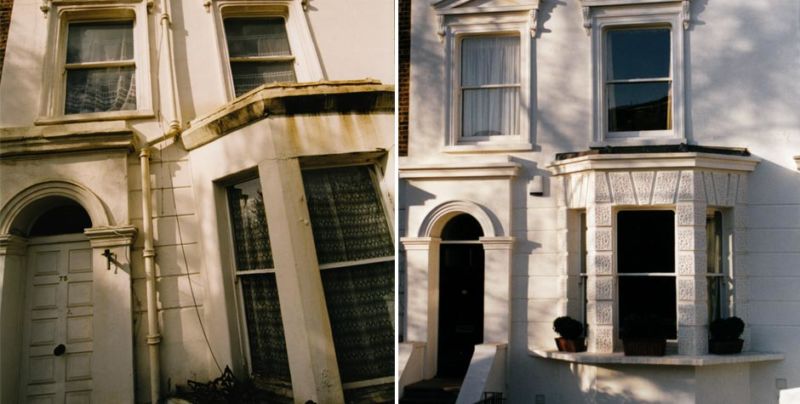Pargetting: Not Just the Pretty Face of Plasterwork
The Elizabethan poets Ben Jonson and Michael Drayton chose to use the word ‘pargetting’ to allude satirically to the white make-up popular during Elizabethan times, favoured by the Queen herself. The comparison of the white coating of the face to the decorative plaster coating of a building was probably meant to poke fun at those women who wore it and how thickly they laid it on, in the same way my Mum used to ask me if I had ‘plastered’ the thick orange foundation of my teenage years on ‘with a trowel’. But pargetting is a kind of make up for buildings – used to improve the appearance, but also to promote a certain image of wealth, success, attractiveness and any political points you might want to get in there.
From the old French word ‘parjeter’, meaning to throw or roughcast, it is widely thought that the first practioners of pargetting came over with the Romans. East Anglia is considered the spiritual home of pargetting in Britain and is where most surviving examples are found. A lack of building stone in this area meant that local builders used oak and clay instead, which then had to be weatherproofed with a coating of plaster. If you could afford it, the plasterer could decorate it for you, meaning even early pargetting was a symbol of wealth. Early examples are often found in towns that were newly wealthy from the wool trade. These earliest forms of pargetting are relatively simple. The surface to be decorated was divided into rectangular panels and a different pattern was created in each one; such as dots made by indenting the plaster with boards driven through with nails, or zig zag and scallop patterns created using coarse combs.
This simpler form of pargetting continued, but the influences of the Renaissance, and particularly Italian stucco work, began to filter through and soon figures and animals in relief appeared alongside more elaborate designs. The entry point for this style to England is considered by many to be Nonsuch Palace, Henry VIII’s attempt to proclaim his wealth and the stability of his dynasty to his European brothers, particularly France. The key is in the name – there was meant to be ‘Non such’ palace anywhere.
In 1538, Henry bought the village of Cuddington, a village ancient enough to have featured in the Domesday Book, and knocked it down to make way for his palace. The timing of the building is key – it was the 30th year of his reign and six months after Prince Edward, the much longed for male heir to secure the Tudor dynasty, had been born. It had taken three wives and huge religious upheaval, but he had finally arrived and now Henry could relax; he had an heir to keep his dynasty secure and prevent England from falling back in to the brutal years of the Wars of the Roses where noble families fought over who should rule. Francis I of France was working on a splendid palace, Fontainebleau, why shouldn’t Henry have one too? Non such said: ‘Look at me! I may have moved heaven and earth to get this son, but now he’s here and we are secure and rich and glorious. Eat your heart out, France, and don’t think you can invade me any time soon.’ And the pargetting was a big, expensive part of this display.
To put it in to perspective, the much larger, (but without pargetting), Hampton Court cost £16,000 whilst small elaborate Nonsuch cost £24,000 and was not finished until after Henry died. The pargetting, (also referred to by this point as stucco duro), was on a massive scale. Covering an area of 2,055 square metres and with an average height of 274 metres, the main decoration consisted of Roman Emperors, Gods, Goddesses, the deeds of Hercules and the personification of the Liberal Arts and Virtues. As well as reflecting the Renaissance style, this was aimed at Prince Edward to show him both his inheritance and the virtues he needed to practice as future King of England. Henry and Edward themselves appeared in the decorations among the gods and goddesses, proclaiming the legitimacy and power of the dynasty through comparison with Emperors, Gods and heroes of the ancient world.
The importance of the project to Henry, and his close involvement in it, is suggested by a letter of complaint he wrote about the overseer of the plasterers in May 1545. Giles Geringe, who is largely referred to as an ‘unknown foreigner’, had taken over the role of supervisor at Christmas 1544, but according to Henry’s investigations he had not been at work more than twice since then, despite claiming wages as though he had been there daily. It is clear Henry has not taken to Giles the plasterer – he describes him as ‘a fellow that glorieth much in himself and his doings’. Considering he would have had plenty of people to oversee the project for him, the King’s involvement in the detail of whether the plasterers’ supervisor is turning up is surprising. Perhaps it was a pet project because of what it demonstrated to the world?
The man who is credited with providing large elements of the design and the technical skill to produce this masterpiece was an Italian called Nicholas Bellin, who had previously worked on Fontainebleau for Francis. He brought the techniques of Italian stucco work with him to Nonsuch. No records remain detailing exactly how his team worked, but in an essay on the subject Martin Biddle has made an educated guess based on known stucco techniques and the evidence of the ruins of the palace. First, he says, a coarse granulated plaster was probably daubed on. Then, the amount of finer plaster needed to create the shape on top was added. A hollowed wooden mould, powdered with marble dust, was then placed over the top and struck with a hammer to leave the imprint of the shape. This was then removed and the shape was defined, cleaned and finished with a fine plaster on the top. The presence of wooden pegs hammered in to places where the decoration was particularly high relief suggests that the work was moulded in to position on the scaffold of the building, rather than pre-constructed and then hung up.
What the King has, the nobility emulates. This type of pargetting was soon in high demand across England and continued to be popular up until the Civil War and the ensuing Commonwealth. It was not a very Puritan thing to decorate your house so ostentatiously and make a show of your personal wealth. Despite this, Nonsuch Palace survived the Civil War intact. It was, ironically, the restoration of the monarchy which finished off Nonsuch as Charles II settled it on his mistress, Barbara Villiers, who had a serious gambling problem. By 1683 she had slowly dismantled and sold off all the building materials to repay gambling debts, and Nonsuch was no more.
More generally speaking, however, pargetting benefited from the restoration of the monarchy as it came back in to fashion with a vengeance. England cried out for beautiful, showy, classical things after the no Christmas years of Cromwell. One particularly famous and impressive piece of pargetting was created around this time in the craft’s home province of East Anglia.
In Ipswich, the Sparrowe family had lived at the same house since 1603 and had seen out the Civil War and the Commonwealth within. At some point between 1660 and 1670, the then head of the household, one Robert Sparrowe, commissioned a piece of pargetting featuring the royal arms of King Charles II, the motto of the Order of the Garter, and an image representing each of the four continents. Following a restoration the work is still visible today, and is still very impressive. Leaving out the images it portrays and what the meaning of them might be, it is a display of wealth and success in its own right which is very striking to passers by.
But could there be deeper reasons for its existence, particularly considering the choice of a royal coat of arms and the time in which it was created? After the collapse of the Commonwealth and the return of the monarchy, many people felt the need to display their loyalty to the newly restored King. Charles II was busy putting the people who had signed his father’s death warrant on trial, and people were keen to put as much distance between themselves and the ideas of the previous decade as possible. Putting a royal crest on the side of your house was a visible way to do this.
It could just as easily have been a genuine show of loyalty, however. When the building was being restored in the 1800s, workmen discovered a secret room fitted out as a chapel. These were usually found in the houses of wealthy Catholic families who wanted to continue to worship as they pleased throughout the fervently Protestant Commonwealth. Because they were at odds with Puritan parliamentarians when it came to religion, most Catholic families (although not all) tended to have Royalist leanings. There is also a family legend which goes with this room. Following defeat at the Battle of Worcester, the future Charles II fled to Brighton to escape the country. It is said that he hid in this secret chapel on his journey, before using the tunnels under the house to escape to a nearby Priory.
The story is unlikely to be true, as his route is now well known, and Ipswich was not on it. It could have been local gossip. Or the family could have made it up themselves, to emphasise their royalist leanings through either genuine sympathy or as part of the climate of the time. We will never know for sure, although what the presence of the room suggests is that the family may have been royalists. What is clear is that they chose to display either genuine or strategic feelings through the public means of pargetting. Which also had the added bonus of showing everyone how well they themselves were doing. Effective on both accounts.
Pargetting continued to be popular until the Industrial Revolution rendered hand-crafts un fashionable in the quest for machine made objects. It experienced something of a revival under the Victorians as part of the Arts and Crafts movement; and has also done so recently as people become more interested in local crafts and traditions. We now have other ways of portraying ourselves in the way we want to be seen by the world, so it is likely that it will never have quite the same popularity that it once did, however we can still enjoy the examples that have been left behind. The people who commissioned them will probably be quite happy we are still admiring their plasterwork centuries on; and remarking on how wealthy they must have been to do it. You could say that it’s the ultimate realisation of their purpose.
Sources:
www.buildingconservation.com
Wikipedia
www.epsomandewellhistoryexplorer.org.uk
www.heritagecrafts.org
www.kettlenet.co.uk
Pargetting in Suffolk by F A Girling – accessed through www.suffolkinstitute.pdf
www.collections.museumoflondon.org.uk
www.everycastle.com/nonsuchpalace.html
Plastercasts: Making, Collection and Displaying from Classical Antiquity to the Present, ed by Rune Frederiksen, accessed through www.books.google.co.uk article used called ‘Making of Moldes for the Walles’ by Martin Biddle
Renaissance Architecture: Critics, Patrons, Luxury by David Thompson, accessed through www.books.google.co.uk
Article on Ancient House by David Ross on www.britainexpress.com


